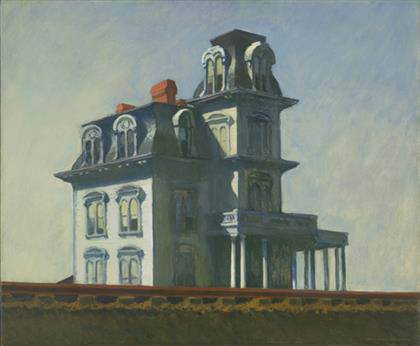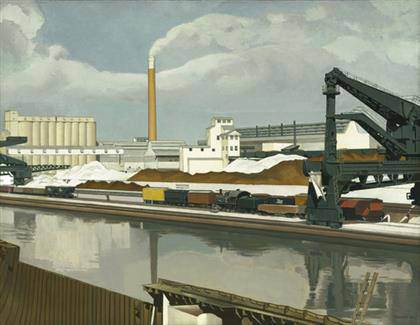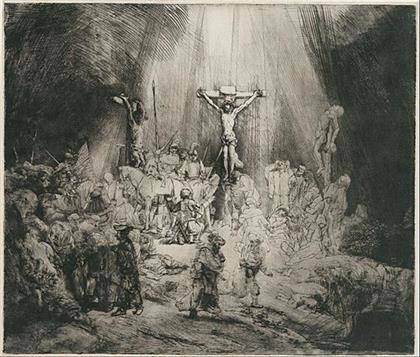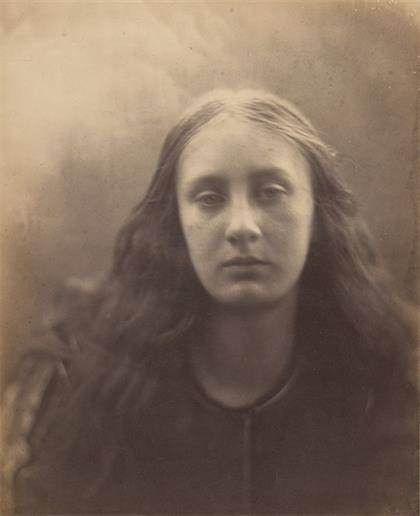
Edward Hopper: House by the Railroad (1925)

Charles Sheeler: American Landscape (1930)
American Modern: Hopper to O’Keeffe – MoMA New York The Museum of Modern Art announces ‘American Modern: Hopper to O’Keeffe’, a survey of works from the first half of the 20th Century by more than 50 artists. On display from August 17, 2013, to January 26, 2014.]]>
Source: The Museum of Modern Art
The exhibition takes a fresh look at the Museum’s holdings of American art made between 1915 and 1950, and considers the cultural preoccupations of a rapidly changing American society in the first half of the 20th century.
“American Modern” includes paintings, drawings, prints, photographs, and sculptures by more than 50 artists, bringing together some of the Museum’s most celebrated masterworks, including pieces by Charles Burchfield, Stuart Davis, Edward Hopper, Georgia O’Keeffe, Charles Sheeler, Florine Stettheimer, Alfred Stieglitz, and Andrew Wyeth. Contextualizing these works across mediums and amid lesser-seen but revelatory compositions, “American Modern” offers these artists’ views of the United States in a period of radical transformation, expressed in a variety of visual styles, artistic movements, and personal visions.
The clash between the urban realities of a rapidly modernizing society and a nostalgia for an idealized American countryside is a theme that runs throughout much of the exhibition. In Edward Hopper’s “House by the Railroad” (1925)—which, in 1930, was the first painting to enter the Museum’s collection—a Victorian manse cropped by the harsh horizontal of a railway track contrasts rapid modernization with an older way of life based in rural traditions. Charles Sheeler’s “American Landscape” (1930), which depicts the Ford Motor Company’s River Rouge plant near Dearborn, Michigan, seems to celebrate newfound industrial efficiency but also remains ambivalent about its effects—missing are the thousands of people who made the factory run, and any sense of noise, dirt, or actual labor or hardship.
The city is also a frequent subject of works in “American Modern”, as evidenced in Walker Evans’s untitled photographs of urban architecture (c. 1928–29) and George Ault’s “New Moon, New York” (1945). Scenes of the American countryside also focus primarily on the land and structures, emphasizing shape and line.
Related content
American Modernism: The Shein Collection at the National Gallery of Art (exhibition, 2011)
Follow us on:


